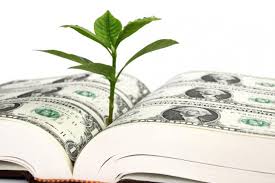Oh Pot! Is Colorado getting too high?
What do you know about marijuana properties in Colorado?
A Few weeks ago I wrote a guide to taxes in Colorado. In this guide I focused on general purpose properties (both residential and commercial). Last week I was inspecting a warehouse that was zoned for marijuana use. As many of you know; Colorado is getting very high on marijuana (see an article I wrote for the Colorado real estate journal).
With the new marijuana frontier, I’m seeing impacts in various property sectors from industrial (biggest impact) to class B office (many are being converted to grow or edibles) to retail. ( 3 quick ways to know if a building is marijuana related) Whether you are in the business or not, if you own commercial property you are likely impacted. The most straightforward impact is on your taxes. Why?
As demand increases for certain types of space the prices paid are going up exponentially. For example I recently saw an industrial buildings value doubled in the last tax cycle, the taxes increased by almost 25k a year and the building was not leased to anything marijuana related.
With huge tax increases looming what should a commercial property owner do? There is one method every commercial owner needs to utilize to get their taxes down. I put together a quick guide to help commercial property owners.
To value a commercial property, there are two methods, the sales approach (discussed in my prior post) and the income approach. As a result of the huge influx of the marijuana users into the commercial arena, prices are being pushed up substantially on both the sales side and lease side. As a property owner if you have a non marijuana use in your building ( or owner user) you will want to look at similar non marijuana properties both from the sales and income side (see below: 3 quick ways to know if a building is marijuana related).
So why does the property use matter? In metro Denver I am seeing non marijuana properties (this is a big generalization) go from 30-50 a foot and marijuana related buildings go from 80-120 a foot. The prices paid are radically different based on the usage. The objective is to find non marijuana properties to use as comparables. Unfortunately many non-marijuana users are being forced to overpay as a result of the lack of supply. So what can you do?
Use the income approach. When I am evaluating a marijuana property I look at what a normal user would pay for the space (you can look on loopnet or other commercial mls service to get a handle on market rents ). Below is a proforma I did on a building in Denver, this building based on the sales approach would be worth over 2m, but on an income approach with a non marijuana tenant and an aggressive cap rate, the building is only worth 1.2m at best. This is a huge difference based on the income approach
3 quick ways to know if a building is marijuana related:
- Pull the property record from the county and see who the lender on the property is, if it is a traditional lender (think Wells Fargo, Bank of America, Vectra Bank) probability is high that it is not marijuana since they will not finance and will call the note if they discover it is utilized for marijuana
- Drive by the building; are there cameras (sure sign of marijuana, since the guy making tacos is not regulated to provide certain types of security) and also if you see non-descript signage (or no signage at all) this is also typically a giveaway
- Finally if you are on the fence as a result of one and two, step out of your vehicle and take a few deep breaths, more likely than not your nose will be able to answer the question
| Pro Forma Example | |||||||
| Square feet | 20000 | ||||||
| $/ft | 6 | ||||||
| Gross Rent | $ 120,000.00 | $/ft | |||||
| heat/Misc | |||||||
| taxes/insurance | * NNN | ||||||
| Reserves | 6000 | * assume 5% | |||||
| Mgmt | 6000 | *assume 5% | |||||
| Vac | 6000 | * assume 5% | |||||
| Total Expenses | $ 18,000.00 | ||||||
| NOI | $ 102,000.00 | ||||||
| 8 cap | $ 1,275,000.00 | ||||||
